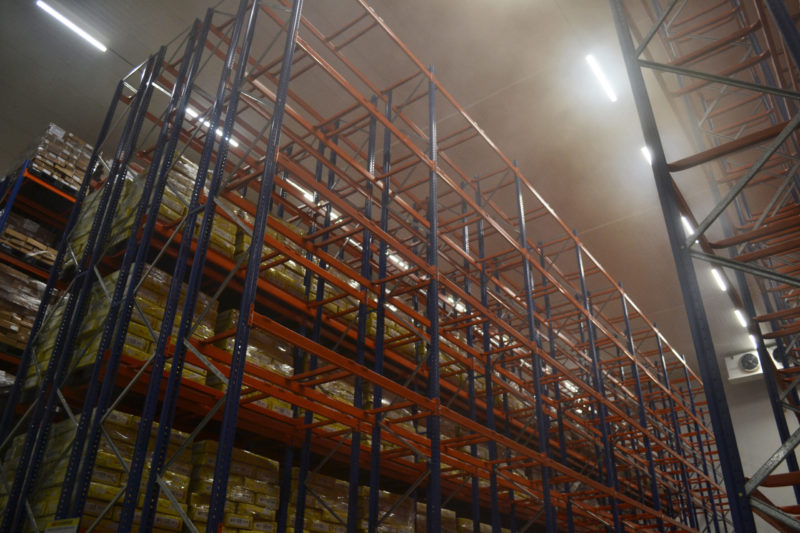-
The Philippine Cold Chain Industry Roadmap launched on Dec 14 aims to increase cold storage capacity by 10% to 15%, or 50,000 pallets, annually
-
Revenue from the cold chain industry expected to reach P20 billion by end of 2023, excluding demand for storage of COVID-19 vaccines
-
The roadmap to employ a Go-5 Synergy strategy for the next five years, including five goals, five focus industries, and five focus agenda
The Board of Investments (BOI) has formally launched the Philippine Cold Chain Industry Roadmap, which targets a 10% to 15% increase in cold storage capacity annually, or 50,000 pallets more each year, to serve increasing needs of various industries.
The revenue of the country’s cold chain industry is expected to reach P20 billion by end of 2023, not including demand for storage of COVID-19 vaccines to be imported into the country in the next three to five years, according to Trade undersecretary and BOI managing head Ceferino Rodolfo in a speech during the launch.
He said the industry is a crucial link in the value chain necessary to strengthen the entire food supply chain of the Philippines, adding the industry’s importance has been further highlighted during the COVID-19 pandemic.
The industry currently has a capacity of 400,000 tons or 500,000 pallets. Warehouses are exclusively for cold storage or for cold and dry storage, or are integrated with the logistics and distribution system, among other services.
In terms of industry distribution, 65% of warehouses are for general warehousing, while 45% are for dedicated or exclusive warehousing.
Growth prospects and barriers
Demand for cold chain has been increasing yearly, with both imports and exports of key products recording growths from 2010 to 2019, said roadmap consultant and University of Asia and the Pacific senior agribusiness specialist Florence Mojica-Sevilla in a presentation during the roadmap launch.
The roadmap is a stakeholder-driven, inclusive and market-oriented plan to guide the industry in the coming years and help it adapt to the “new normal,” she noted.
She said growth prospects come from food delivery services, convenience stores’ take-away meals, local food production requiring cold chain logistics services, vaccines and other temperature-sensitive drugs, and e-commerce and online grocery shopping.
Also driving demand are people’s preference for just-in-time delivery; the trend for integrated end-to-end supply chain logistics; oversupply of some cash crops with the Department of Agriculture’s (DA) Plant Plant Plant Program; and the county’s continued dependence on food imports.
Barriers to expansion of the industry include limited awareness on food safety and misconception about frozen products; low demand for cold chain logistics services in some areas; lack of local government unit (LGU) support for cold chain investment; LGU regulations; product seasonality; limited infrastructure/road network support; traffic; and the African Swine Fever affecting meat production in the country since last year.
Other industry weaknesses include insufficient cold storage capacity especially outside Metro Manila; shortage of logistics and trucking services; lack of trained workers; difficulty complying with required documentation for accreditation; high energy/power costs; weak internet connectivity; high investment requirement; limited information on cold storage services; and lack of coordination within government agencies involved in shipments.
RELATED READ: PH private sector-initiated multimodal transport and logistics roadmap unveiled
Go-5 Synergy plan
The roadmap, the crafting of which started last year, will employ a Go-5 Synergy strategy for the next five years, which includes five goals, five focus industries, and five focus agenda.
The five goals for the short and medium term are:
- An organized cold chain industry with synergistic partnership among all stakeholders
- Strong logistics providers (transport, ports, and road networks) to implement continuous cold chain protocol in transit and handling
- Availability of more efficient, skilled and fairly compensated labor force
- Favorable government and public support to increase investments in the cold chain industry, geared toward countryside development to generate jobs and alleviate poverty
- Increasing awareness on food safety
For the short term, or until 2022, the target is to establish five cold storage facilities—two in Luzon, one in Visayas, and two in Mindanao. The aim is also to invest in cold chain logistics, particularly in five areas: trucking services, reefer vans, internet connectivity, road improvement, and new access roads to cold storage warehouses.
Five policy reforms are also eyed for the short term. These will tackle delivery schedule, accreditation and documentary requirements, on-time issuance of Certificate of Meat Inspection (COMI), data and information access, and compliance with food safety regulations.
The five focus sectors are meat/processed meat; fisheries and aquaculture; dairy; fruits and vegetables; and non-food products such as pharmaceuticals and electronics.
The five action agenda cover investment in cold chain facilities, investment in cold chain logistics services, enhancement of demand for cold chain services, food safety education, and policies and regulations.
Investment in cold chain facilities will target establishing cold storage warehouses and rendering facilities, and investing in renewable energy.
For cold chain logistics, the roadmap aims to establish cold chain logistics services such as reefer trucks, container vans, plug-ins, improved road network and new access roads, and to upgrade internet connectivity.
To increase demand, the roadmap identified measures such as broadening cold chain service availability, increasing value-added services, establishing a strong hold on current markets, and market development.
On policies, these will focus on delivery time; compliance with accreditation; on-time issuance of COMI; and improvement of industry data and information access, among others.
For roadmap implementation and monitoring, a National Cold Chain Committee chaired by BOI and the DA will be created. The Cold Chain Association of the Philippines will be the vice chair, and five technical working groups for each action agenda will be formed.
A flagship program action team will also be created to oversee the realization of industry milestones in the short term. – Roumina Pablo





